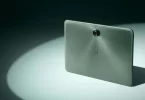The automotive industry is a complex ecosystem where well-known car brands often belong to larger parent companies. Many car enthusiasts may be surprised to learn that their favorite brands are part of a bigger web of ownership. Companies like BMW Group, Tata Motors, Volkswagen AG, Toyota Motor Corp., and General Motors hold sway over a vast range of automobile manufacturers, shaping the future of the industry in unexpected ways.
BMW Group: A Legacy of Prestige
The Rise of BMW
BMW, founded in 1916, has a long-standing reputation for producing luxury cars that emphasize driving dynamics and engineering excellence. Over the years, the company has expanded its reach, absorbing other car brands and broadening its market.
Brands Owned by BMW Group
Today, BMW Group not only manufactures the famous BMW models but also owns Mini and Rolls-Royce. Each brand represents a unique market segment. Mini focuses on compact, fun-to-drive vehicles, while Rolls-Royce is synonymous with opulence and luxury.
Tata Motors: A Surprising Powerhouse
The Acquisition of Jaguar Land Rover
In 2008, Tata Motors made headlines by acquiring Jaguar Land Rover from Ford, a move that shocked many in the industry. The acquisition allowed Tata Motors, an Indian company, to tap into the luxury car market, solidifying its place on the global automotive stage.
Tata’s Global Reach
Tata Motors is not just about luxury; its broader portfolio includes commercial vehicles and affordable passenger cars, especially in emerging markets like India and Africa. With brands like Tata Motors and Jaguar Land Rover under its wing, the company has a diverse global footprint.
Volkswagen AG: A Giant Among Giants
Volkswagen’s Diverse Brand Portfolio
Volkswagen AG, one of the world’s largest automakers, owns a staggering array of brands, including Volkswagen, Audi, Porsche, Lamborghini, Bentley, and even Bugatti. Each brand has its own identity, but they all benefit from Volkswagen’s technological innovations and global manufacturing network.
The Role of Porsche and Audi
Porsche and Audi stand out in the Volkswagen family. While Porsche represents high-performance luxury sports cars, Audi is known for blending performance with cutting-edge technology, particularly in electric vehicles.
Toyota Motor Corp.: Quality and Innovation
Toyota’s Expansion in the Automotive World
Toyota, the world’s largest automaker by production volume, has built a reputation for reliability and quality. The company’s innovative approaches, particularly in hybrid and electric vehicles, have made it a global leader in sustainable transportation.
Lexus: Toyota’s Luxury Arm
Toyota’s foray into the luxury car market came with the launch of Lexus in 1989. Today, Lexus competes with German giants like BMW and Mercedes-Benz, offering luxury vehicles that focus on craftsmanship, performance, and cutting-edge technology.
General Motors: An American Icon
GM’s Dominance in the US Market
General Motors (GM) is synonymous with American automotive excellence. The company, which owns brands like Chevrolet, GMC, Cadillac, and Buick, has been a dominant force in the U.S. car market for over a century.
The Global Influence of General Motors
Beyond the U.S., GM has a presence in China, South America, and Europe. Its focus on innovation, particularly in electric vehicles, is reshaping its global strategy.
Renault-Nissan-Mitsubishi Alliance: A Powerful Trio
The Origins of the Alliance
The Renault-Nissan-Mitsubishi Alliance was born out of necessity, as these three companies sought to pool resources and expertise. The partnership allows them to share technologies and reduce costs while remaining competitive in their respective markets.
How the Partnership Works
Each company maintains its own brand identity, but they collaborate on everything from research and development to manufacturing processes. This synergy has allowed the Alliance to compete with larger automotive groups.
Stellantis: The Merger That Shook the Industry
Fiat Chrysler and PSA Group Merger
In 2021, the merger of Fiat Chrysler Automobiles (FCA) and PSA Group resulted in the creation of Stellantis, now the world’s fourth-largest automaker. This merger brought together an extensive lineup of brands, from Jeep and Ram to Peugeot and Citroën.
The Brands Under Stellantis
Stellantis now oversees 14 brands, each with its own distinct identity. Whether it’s the rugged off-road capability of Jeep or the elegant design of Peugeot, Stellantis has something for every type of driver.
Geely Holding Group: The Rise of a Chinese Giant
Geely’s Acquisition of Volvo and Lotus
Geely, a Chinese automotive giant, has made significant strides in recent years, particularly with its acquisition of Volvo and Lotus. Geely has allowed these brands to retain their identity while infusing them with new capital and innovative technologies.
Geely’s Global Ambitions
With aspirations to become a dominant player in the global automotive market, Geely has focused on electric vehicle technology and expanding its footprint in Europe and the U.S.
Ford Motor Company: Still Standing Strong
Ford’s Historical Impact on the Auto Industry
Founded by Henry Ford in 1903, Ford Motor Company revolutionized the auto industry with the introduction of assembly line production. Today, Ford remains a leader in innovation and continues to push the boundaries of what’s possible in vehicle manufacturing.
Ford’s Role in Electric Vehicle Innovation
As the automotive industry shifts toward electric vehicles, Ford has embraced the challenge, releasing models like the Ford Mustang Mach-E and the Ford F-150 Lightning, marking its presence in the EV market.
Hyundai Motor Group: A South Korean Success
The Hyundai-Kia Partnership
Hyundai Motor Group and Kia Motors are key players in the global automotive industry. Hyundai’s acquisition of Kia in 1998 created a powerful partnership, allowing both companies to share technology and expand their global reach.
Hyundai’s Global Strategy
Hyundai has focused on producing affordable, reliable vehicles while also investing heavily in electric and hydrogen-powered cars, showcasing its commitment to a sustainable future.
Honda Motor Co.: Innovation and Reliability
Honda’s Dominance in Motorcycles and Cars
Honda has long been recognized for its dual focus on motorcycles and cars. The company’s reputation for reliability and engineering excellence extends across its entire product line, from compact sedans to motorcycles.
The Acura Brand
Honda’s luxury arm, Acura, offers performance-oriented vehicles that rival European competitors. The brand has built a loyal following thanks to its combination of performance, technology, and value.
Fiat’s Evolution: From Independent to Stellantis
Fiat’s Impact on European Automotive History
Founded in 1899, Fiat was a dominant force in Europe for decades. The company’s small, affordable cars like the Fiat 500 became iconic, influencing car design worldwide.
The Brands Under Fiat
After merging with Chrysler to form FCA, Fiat became part of Stellantis, further expanding its reach across Europe and the Americas.
The Unexpected Players in the Auto Industry
Tech Giants Like Apple and Google
In recent years, tech companies like Apple and Google have ventured into the automotive space. While neither has produced a car yet, their investments in autonomous driving and electric vehicle technology could reshape the industry in the future.
Non-Auto Companies Entering the Scene
Companies outside the automotive industry, like Dyson and Sony, have also expressed interest in developing electric vehicles, illustrating how the lines between tech and automotive are increasingly blurred.
Conclusion
The automotive industry is far more interconnected than many realize. From legacy brands like BMW and Toyota to newcomers like Geely, the global landscape is constantly evolving. Understanding the intricate web of ownership helps us appreciate the vast resources and strategic decisions that shape the cars we drive today.







